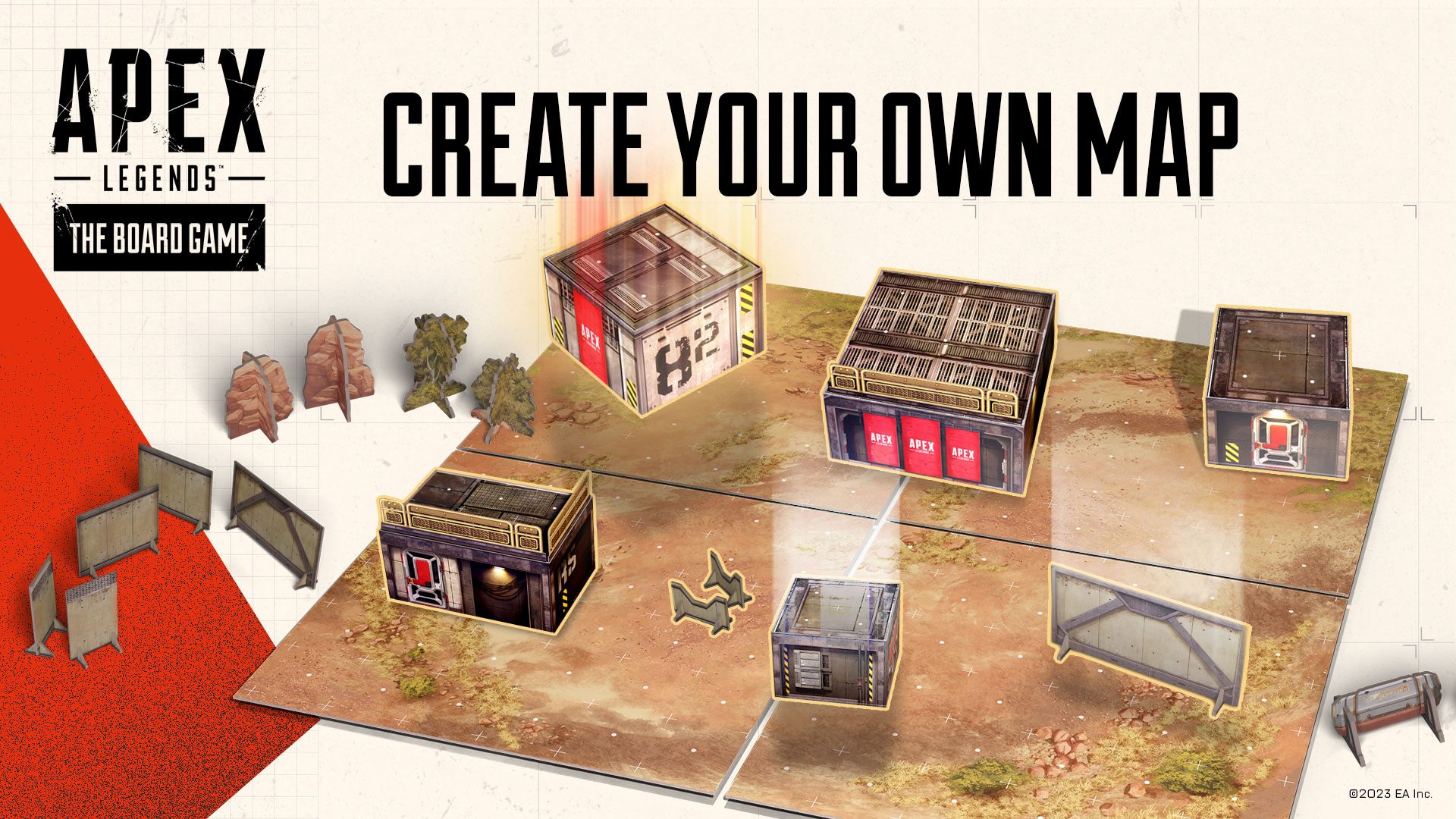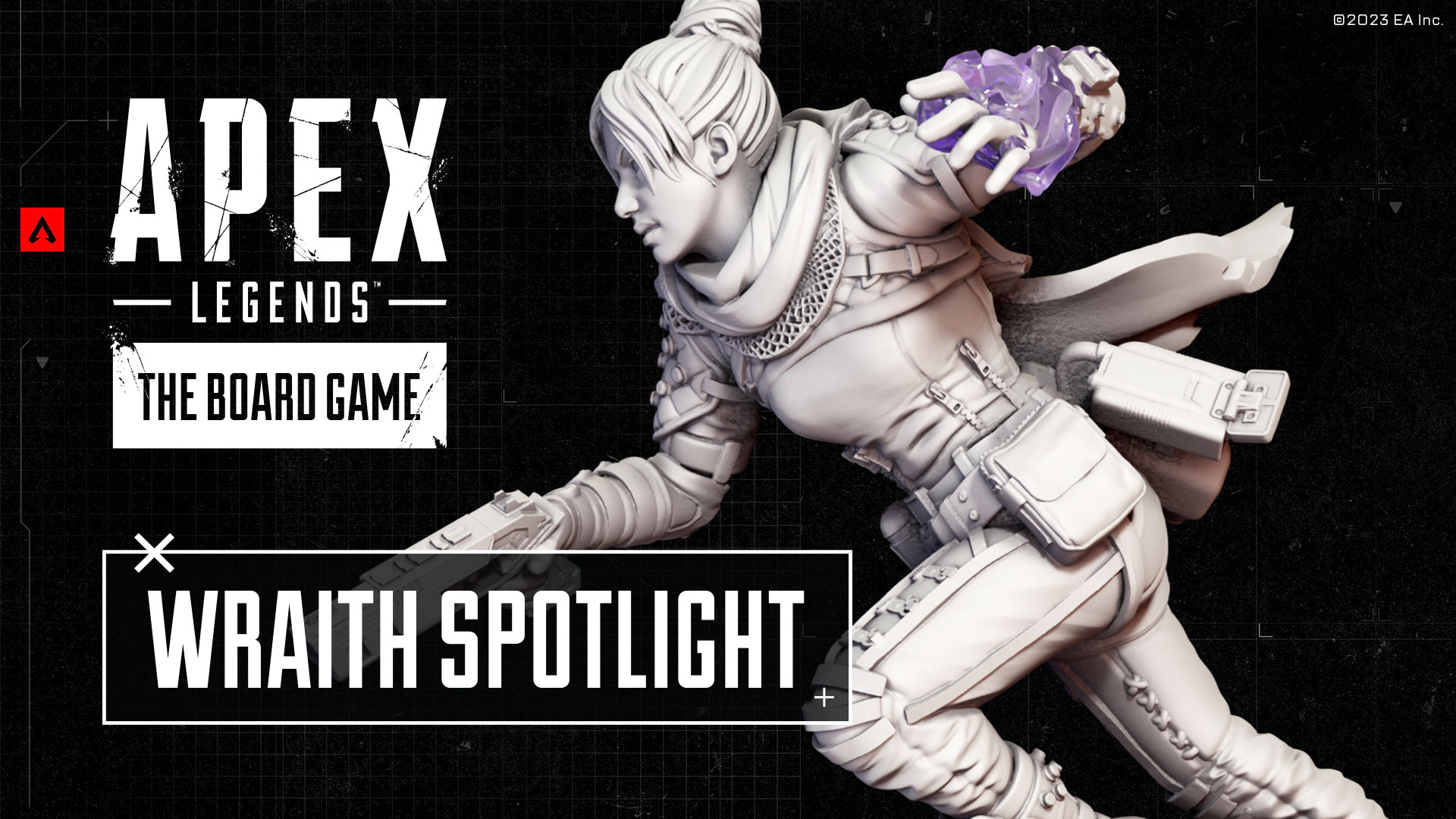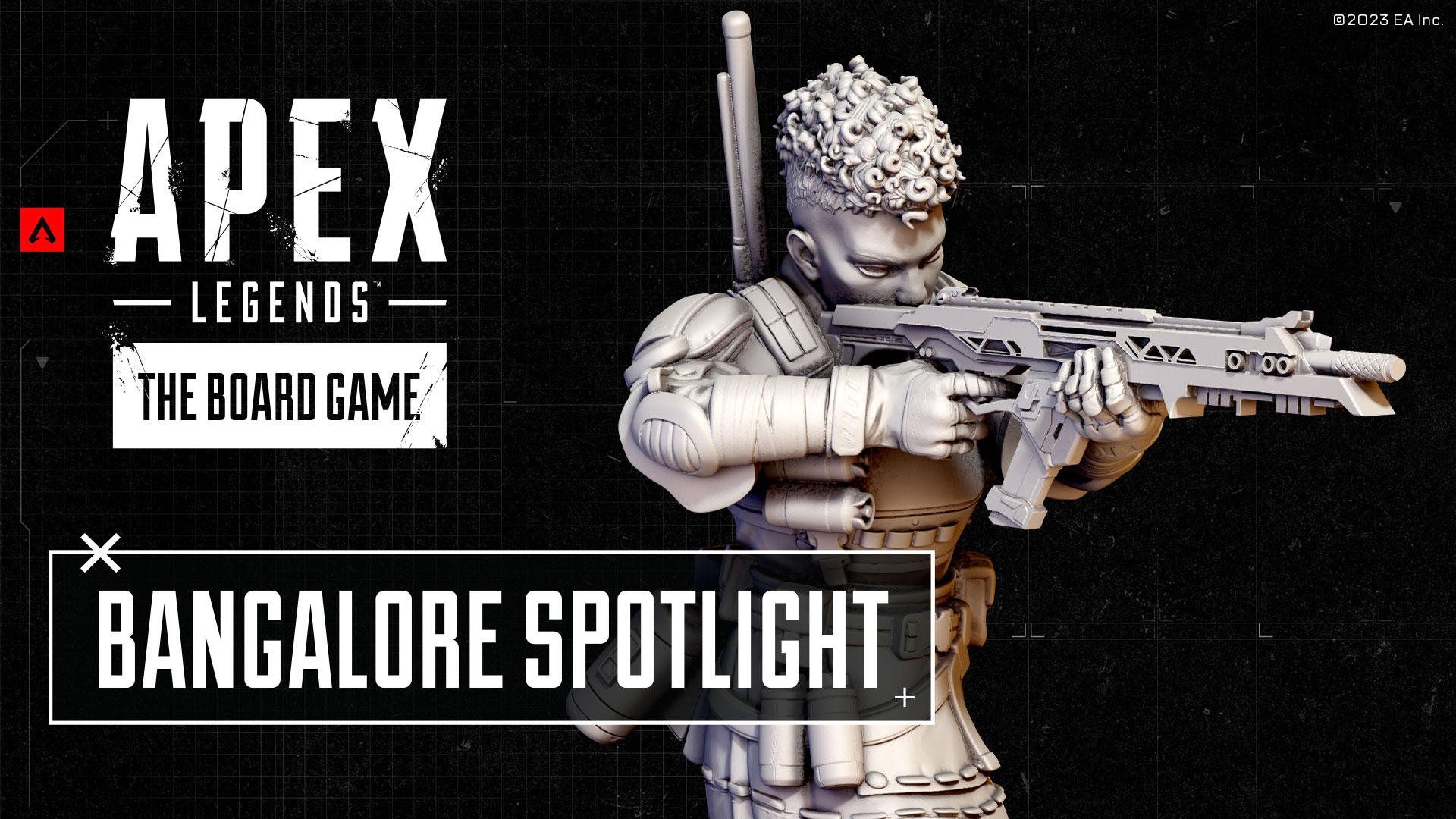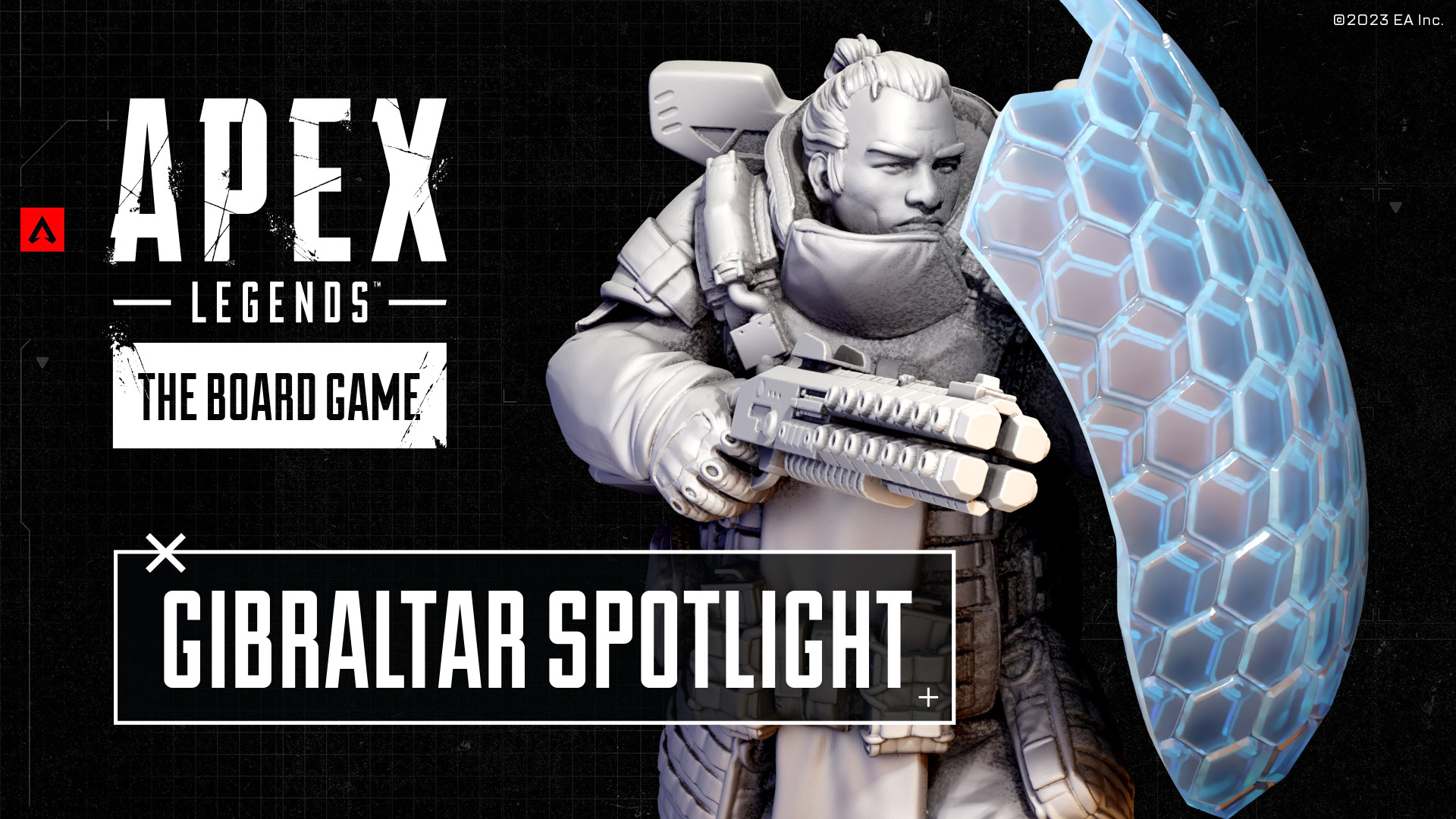What is There to Expect?
While Jakub, our CEO, might look like he’s got the situation under control, that’s about to change as he gets third partied by none other than Paula Deming from YouTube’s Things Get Dicey! Be sure to tune in for insight into some of the game’s key aspects, including the handling of zones, miniaturizing your favorite Legends, and implementing ring mechanics.
Although it’s been barely a week after the announcement of Apex Legends™: The Board Game, the game has been in development for over two years and can already boast a playable prototype.
Based on the hit hero shooter video game, it is a skirmish tabletop miniature game designed by Fantasia Games co-founder Thanos Argyris and Michalis Nikolaou—the minds behind Endless Winter: Paleoamericans—and published by Glass Cannon Unplugged—responsible for Frostpunk: The Board Game—as part of a licensing partnership with Electronic Arts Inc. and Respawn Entertainment.
The CEO of Glass Cannon Unplugged, Jakub Wiśniewski, provides some early insight into the design process and mechanics behind the game during an interview hosted by Paula Deming from the Things Get Dicey! YouTube channel.
“The first thing that the game’s developers discussed as they sat at a round table was: what is the essence of Apex Legends? The answer was: the standoff near the end! The excitement that comes with seeing the ring shrink for the final time, delineating the zone where the stakes are all or nothing.”
But the designers also view each match in the game to be its own story, beginning from the choice of Legends and teammates, through selecting your drop zone, right until you hear the echo of the final shot.
Playing the Game
Skirmish games tend to have a high entry point, preventing the non-hobbyist from joining the action. In the realm of video games, Apex Legends™ is a great example of how to make a potentially complex experience accessible to newcomers. This is why it was essential from the onset for the development team to cater to players who do not necessarily enjoy spending an entire week familiarizing themselves with the basic mechanics of a new game, but want to get “into” Apex Legends™: The Board Game right away.
At the same time, the designers are making sure that achieving the goal of avoiding a steep learning curve will not come at the cost of watering down the gameplay. On the contrary—the ambition is to achieve a level of tactical depth never before seen in skirmish games, moving beyond the classic battle royale deathmatch into the territory of diverse play styles and game modes with progressive objectives.
“You will have the freedom to choose the game mode, map setup and scenario yourself or have it established at random with the use of a wide variety of presets and options, while the different aspects of each playthrough such as the objectives for every mission, as well as the outcome and flow of events—even victory conditions—will be determined through the decisions you make.”
The objective of the game is kept simple—all you have to do is eliminate the opposing team. But the path towards this goal involves decision-making every step of the way, starting with a pre-game mechanic for drop zone selection, but also involving ability management, proper utilization of teamwork, as well as modifying weapons and equipment.
“Not only does each Legend play differently owing to its unique abilities, powers and components but each weapon can be fully upgraded in a number of ways, creating thousands of possible combinations”.
Apart from a plethora of options for leisurely play, the team behind the game is working to make it a formidable entry in the world of competitive play. To this end, they turned to Michal Duda, a member of the Polish national Warhammer 40,000 team and world champion, to coordinate the process and act in the capacity of advisor.
The Legends Themselves
While the Core Box for Apex Legends™: The Board Game allows from 2 to 4 players, with two teams controlling between 2 to 3 Legends, there are already plans for future expansions increasing the number to at least 6 players, and possibly much more. The Legends made available from the start include Bloodhound, Bangalore, Gibraltar, and Wraith. Each character is represented by a miniature that does not require assembly and makes use of additional translucent elements.
“Seeing the 3D models for the Legends from the video game, we knew we had to think of a way to retain their level of detail. That is why we decided to blow up the scale of the miniatures for use in the board game from the usual 28/32mm to 40mm to make sure all of the gear and accessories are there to please the eye.”
The effort to make the Legends believable and maintain or even show off what makes each of them unique is clearly expressed through another idea we envisioned from the very beginning of the development process—dioramas. Each Legend arrives in the Core Box with a personalized, 10-15 cm diorama.
“We’re avid wargamers and hobbyists, so we wanted to have something in the game that will reflect the unique nature of each Legend right after you take it out of your box. We also really wanted to have card holders for each of the players, which is why we merge the two ideas into one item, so that it not only pleases the eye, but also serves a practical purpose.”
Designing the Ultimate Hot Zone
“The scale of the minis motivated us to design a living, breathing environment for the battle to take place, so we filled the map with structures that not only serve as eye-candy, but properly fit into and build upon existing game mechanics, such as establishing line of sight or moving around the grid.”
The battlefield in Apex Legends™: The Board Game makes use of an immersive 3D environment with collapsible terrain. The developers turned to Acid House Terrain to obtain the invaluable contribution of specialist game designer Marius de Simón, responsible for making sure that the cardboard buildings used in the game are easy and instinctive in setup, as well as adequately sturdy and practical, fitting into a single box, without the need to store them on shelves (unless, of course, one chooses to do so).
Also included in the board game iteration of Apex Legends™ is the easily recognizable ring, which gradually limits the areas available to the players and deals damage whenever their characters step outside.
“The ring is an indispensable part of the battle royale experience, and we strive to retain all aspects recognizable by fans of the video game in the tabletop version.”
Upcoming News and Testing
The team at Glass Cannon Unplugged is already offering weekly community updates, focusing on a particular aspect of the game in each of them, but the developers are also getting ready to post a module for the game on Tabletop Simulator, a software that emulates the physical components of a board game in a virtual environment. We hope you will join us and see what Apex Legends the Board Game has to offer.




